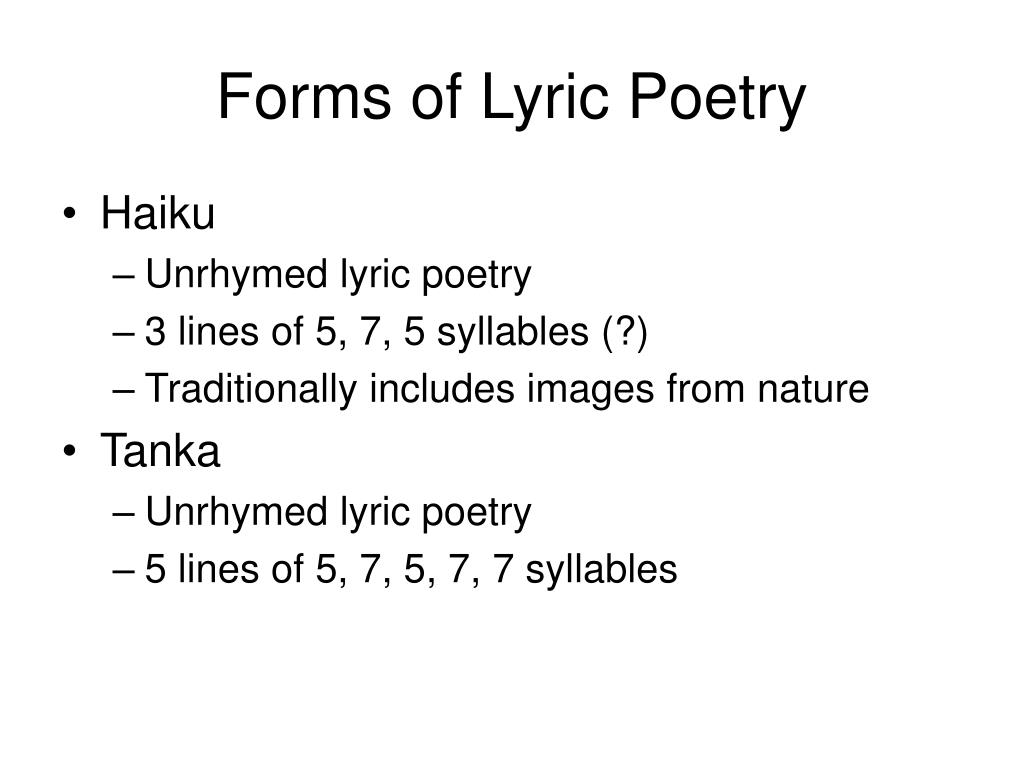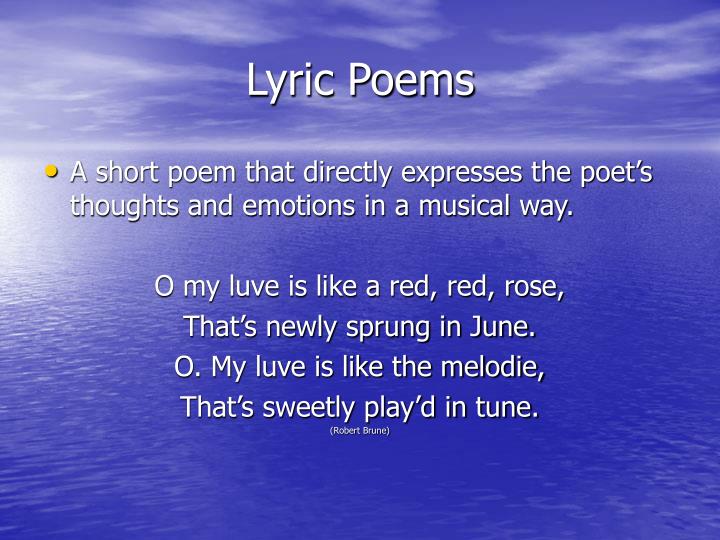

Probably the best-known five-line poem in English, although nobody is quite sure how this type of poem came to be named after a place in Ireland. Auden’s ‘ Funeral Blues’ is a popular modern example (featured in the film Four Weddings and a Funeral).Įlegies are usually mourning the person who has died, but sometimes they can be satirical, as in Jonathan Swift’s ‘ A Satirical Elegy on the Death of a Late Famous General’, about John Churchill, Duke of Marlborough, which mocks the late duke rather than mourning his death.

There are many great examples in English literature: W. Horatian odes were much more down-to-earth and intimate than the more formal and public nature of the Pindaric ode.Īn elegy is a poem about someone who has died. The two main classical kinds of ode were the Pindaric (which was rather lofty and high-flown) and the Horatian (named after Horace). So Keats’s ‘ Ode to a Nightingale’ is a poem of praise addressed to the bird, for instance. Ballads were a popular form of poetry in the Middle Ages – popular with the lower classes perhaps even more than with the upper classes – because they could be sung in taverns by travelling singers, and thus enjoyed even by people who had never been taught to read.Īlthough there are various kinds of ode, at the fundamental level an ode is a poem written to something or someone. We have selected ten of the most famous ballads here. They usually have a very specific form: quatrains of alternating lines of tetrameter (four feet per line) and trimeter (three feet per line), rhymed abcb. Like epic poems, ballads may be regarded as a subset of narrative poetry. Going back even further, the Descent of Inanna – which predates even Homer by more than a thousand years – is a kind of proto-epic, and a sacred poem to the long-vanished Sumerian civilisation. They are narrative poems, but on an ‘epic’ scale.Īncient Rome has Virgil’s Aeneid, about the Trojan adventurer who, according to legend, travelled to Italy after the Trojan War Greece has Homer’s Iliad, about the war between the Greeks and Trojans and England has Beowulf, one of the earliest Anglo-Saxon poems. But strictly speaking, an epic poem is a long narrative poem dealing with ‘epic’ themes and subject-matter: war, adventure, a clash of civilisations, and many other things.Įpic poems, then, feature extraordinary characters doing extraordinary things, usually with a quick visit to the underworld slotted in somewhere on the itinerary. Some of the oldest poems in various cultures are epics: stories which tell of the founding of a great city or empire, or which provide a shared narrative to bring a particular people together. Agnes’ for a fine example from the era of Romanticism. See John Keats’s great Halloween poem ‘ The Eve of St.
#Lyrical poetry examples series#
What they all have in common is a recognisable story that goes beyond the brief tableau (or series of tableaux) we might get in a lyric poem. This means that some of the greatest narrative poems are fairly long. We have collected some of Crapsey’s best cinquains together in a separate post.Ī narrative poem is, in the broadest sense, any poem which tells a story.

Strictly speaking, a cinquain should conform to the ‘rules’ set out by the American poet Adelaide Crapsey (1878-1914) in her five-line poems: the first line has one heavy stress, the second line two, and third three, and fourth four, and the fifth and final line has just one heavy stress. The sestina is possibly even more demanding than the villanelle: put briefly, it consists of six six-line stanzas, with the lines of each stanza ending with the same six words used in rotation: so if the word cold is the last word of the first stanza, cold will also come at the end of the first line of the second stanza, and so on.īut the best way to see how the sestina works is to observe an example: we recommend Elizabeth Bishop’s poem, simply called ‘ Sestina’, which shows how the six repeated words can take on new significance as they are repeated in each stanza. However, the most famous example of a villanelle in English is surely Dylan Thomas’ 1952 poem about his dying father, ‘ Do Not Go Gentle into That Good Night’, where the two refrains serve as a rallying call to the poet’s father to keep up the fight to the very end.


 0 kommentar(er)
0 kommentar(er)
